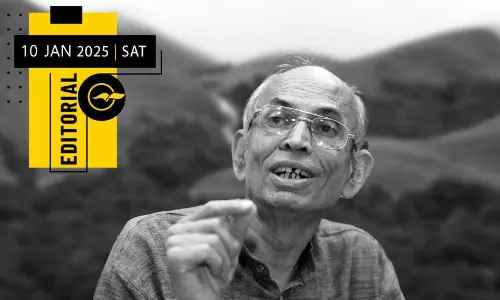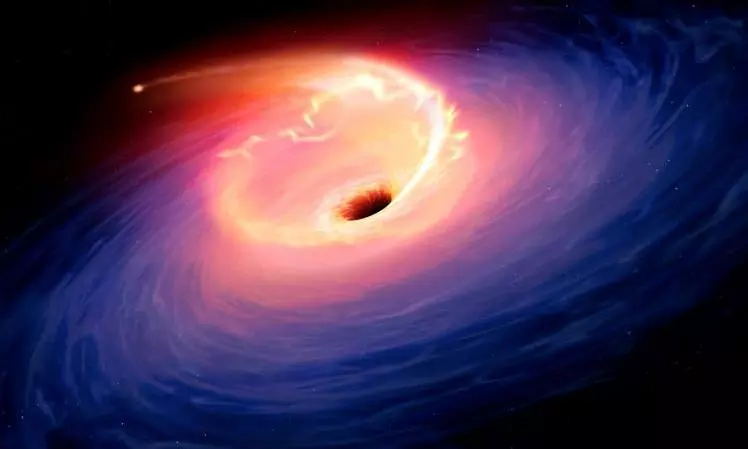
Astronomers witness largest cosmic explosion ever recorded which is traced 8 bn light years away
text_fieldsAstronomers have captured the largest cosmic explosion ever witnessed, believed to have been triggered by a giant cloud of gas being consumed by a supermassive black hole. The flare-up, which was traced to 8 billion light years away, has lasted for over three years, making it the most energetic explosion on record.
The explosion, known as AT2021lwx, is more than 10 times brighter than any known supernova and has released approximately 100 times as much energy as the sun will in its 10-billion-year lifetime.
The event was first detected in 2020 by the Zwicky Transient Facility in California, which surveys the night sky for sudden increases in brightness that could signal cosmic events such as supernovae or passing asteroids and comets. The event initially did not stand out, but when follow-up observations allowed its distance to be calculated, astronomers realised they had captured an incredibly rare event.
Scientists believe that the explosion is the result of a vast cloud of gas, possibly thousands of times larger than our sun, plunging into the inescapable mouth of a supermassive black hole. The cloud of gas may have originated from the large dusty “doughnut” that typically surrounds black holes, although it is not clear what may have knocked it off course from its orbit and down the cosmic sinkhole.
The explosion is not the brightest phenomenon ever witnessed, but it is still going strong, meaning the overall energy release is far greater. A brighter gamma-ray burst, known as GRB 221009A, was spotted last year, but this event lasted only minutes.
Explaining the phenomenon that they have noticed in the sky, Dr Philip Wiseman, an astronomer at Southampton University who led the observations, said it was very difficult to conclude what had happened at first because the extreme brightness led to assume of a star up to 15 times the mass of the sun. The rarity of finding such a massive star later put the team to thof ink of a larger cloud of gas, Wiseman added.
Supermassive black holes are typically surrounded by a vast halo of gas and dust, and the authors speculate that some of this material may have been disrupted, possibly by a collision of galaxies, and sent inwards.
As the material spiralled towards the black hole’s event horizon, it would have given off vast amounts of heat and light, illuminating a portion of the doughnut and heating it to 12-13,000C. The findings are published in Monthly Notices of the Royal Astronomical Society.






















